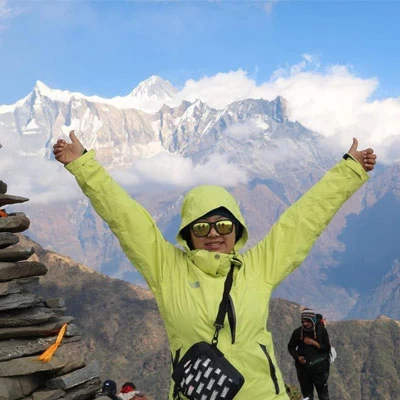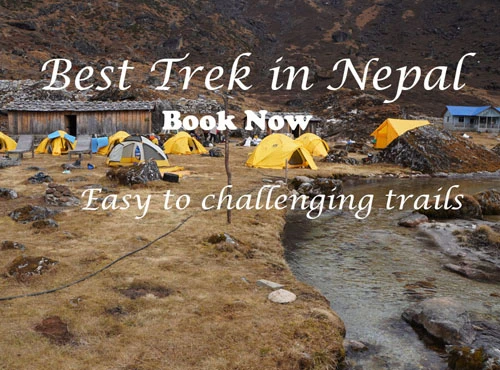Planning your Langtang trek in 2025? Nepal’s Langtang region offers breathtaking Himalayan views, serene glaciers, and rich Tamang culture, making it a top trekking destination. However, new Langtang trekking rules for 2025 require trekkers to follow updated guide regulations and permit requirements. To ensure a smooth journey, it is important to understand these changes. In this blog, we will cover whether a guide is mandatory, updated trekking policies, and key travel tips to help you plan your Langtang Valley Trek.
New Trekking Rules for Langtang in 2025
There are some important rule changes for Langtang trekking in 2025 that you should know. Hiring a licensed trekking guide is now required, so solo trekking is no longer allowed. This rule has been introduced to enhance trekker safety and support local guides. Additionally, authorities have tightened permit regulations, requiring all trekkers to carry a TIMS card and a Langtang National Park entry permit, with stricter checkpoints along the route.
Permit fees have increased slightly, and new environmental policies encourage trekkers to reduce plastic waste. To make your trek smooth and hassle-free, be sure to hire a guide, get the right permits, and follow responsible trekking practices. Below, we have explained everything in detail, including the cost of hiring a guide and the permits you need. So, keep reading to get more details!
Is a Guide Mandatory for Langtang Trekking in 2025?
Yes, hiring a guide for Langtang trekking in 2025 is now mandatory. According to new regulations by the Nepalese government, all trekkers in the Langtang region must be accompanied by a licensed trekking or nature guide. This rule, announced by Langtang National Park in a notice on February 16, 2025, aims to enhance safety and preserve the region's cultural and environmental heritage. While this guide requirement has been in place before, enforcement is now stricter to ensure trekkers comply with the updated regulations.
Why mandatory guide?
You might be wondering why the regulation requiring mandatory guides is being implemented. Many trekkers, just like you, come to Nepal hoping to enjoy the freedom of trekking alone, whether it’s for adventure or to save money. However, there are several important reasons for the implementation of the mandatory guide rule.
- Safety: The primary reason for requiring guides is to enhance trekker's safety, especially in remote and challenging areas. Guides are trained in first aid, navigation, and emergency procedures to handle crises, navigate difficult terrain, and provide assistance when needed.
- Local Economy: Hiring local guides helps boost the region's economy and supports community development.
- Environmental Awareness: Guides promote eco-friendly trekking practices to minimize the environmental impact of tourism.·
- Cultural Understanding: Guides offer valuable insights into the region’s local customs, traditions, and history, enriching your trekking experience.
- Enhanced Trekking Experience: With a guide handling logistics, you can focus on enjoying the trek itself, knowing that all the details are taken care of.
Cost of Hiring a Guide in Langtang Trek
After guides being mandatory for trekking in the Langtang region, the obvious question is, "How much does it cost to hire a guide?" The cost can vary depending on factors like the guide’s experience, the length of your trek, and whether you're trekking solo or in a group.
Generally, hiring a guide for the Langtang trek starts from $25 per day and can go higher according to the guide's experience, skill and language. The guide cost typically includes the guide’s services, meals, and accommodation.
If you are booking through an agency, you might find packages that also cover additional services like porters, permits, and transportation. While this cost might seem like an extra expense, it is an investment in your safety and overall experience. While it might seem like an extra expense, hiring a guide brings great benefits, especially in terms of safety, navigating the trails, and gaining insights into the local culture.
It is also important to remember that your guide’s fee helps support the local community. Many guides come from nearby villages and rely on trekking for their livelihood. So, not only are you ensuring a smoother and safer trek, but you’re also contributing to the region’s economy.
Required Permits for Langtang Trekking
When planning a trek in the Langtang region, one of the first things you will need to think about is the permits required. It is important to have the right documents to ensure a smooth and hassle-free trek. After all, trekking in Nepal’s protected areas comes with rules that are there to preserve the environment and ensure your safety.
For the Langtang trek, there are two main permits you will need to secure:
TIMS (Trekkers' Information Management System) Card: This permit is mandatory for all trekkers and helps the government keep track of trekkers’ movements for safety purposes. The TIMS card also ensures that only authorized trekkers are in the area. It is relatively easy to obtain from any official tourism office or trekking agency in Kathmandu.
Langtang National Park Entry Permit: Since you will be trekking in a protected area, you will need this permit to enter Langtang National Park. The permit helps protect the park’s wildlife and natural beauty by controlling tourism and reducing environmental impact. You can get this permit at the entrance gate of Langtang National Park, usually in the town of Dhunche, but it is always a good idea to have it ready beforehand.
- Langtang National Park Permit: NPR 3,000 Per Person (~$25 USD, incl. VAT)
- TIMS Card: NPR 2,000 Per Person (~$15 USD, incl. VAT)
Best Time for Langtang Trekking in 2025
The best time for trekking in Langtang depends on the kind of experience you’re looking for. Whether you want to enjoy clear skies and warm temperatures or prefer to avoid the crowds, understanding the seasonal changes will help you choose the perfect time for your adventure.
Spring (March to May): If you want great weather and beautiful views, spring is one of the best times to trek in Langtang. The temperatures are pleasant, and the days are longer, giving you more daylight for trekking. The rhododendron forests bloom during this season, adding bright colors to the already stunning scenery. It is also the busiest time for trekkers, so you will meet other travelers on the trail, but it doesn’t feel too crowded.
Autumn (September to November): Another great season for trekking, autumn offers clear skies, fresh air, and excellent trekking conditions. Since the monsoon season has just ended, the trails are dry, and the mountain views are crystal clear. It rains less than in spring, and the temperatures are still comfortable. Autumn is slightly more popular than spring, but the trails remain peaceful, making it a great time to enjoy Langtang’s natural beauty.
Winter (December to February): If you prefer a quieter trekking experience, winter could be a good choice. However, it gets quite cold, especially at higher altitudes. With fewer trekkers, you will find the trails more peaceful. But keep in mind that some tea houses and lodges may be closed due to the off-season. Be prepared for freezing temperatures and possible snowfall, but the snowy landscapes make Langtang look magical.
Monsoon (June to August): Monsoon brings heavy rain, making trekking more difficult. The trails can be slippery and muddy, and there is a higher risk of landslides. Most trekkers avoid Langtang during this season because the views are often blocked by clouds. However, if you don’t mind some rain, the greenery is at its peak, and the landscapes look fresh and vibrant. Just be extra cautious while trekking.
Some Tips for a Memorable Langtang Trek:
Learn a few basic Nepali phrases: While most people in the Langtang region speak some English, learning a few simple Nepali words like "hello" (Namaste) or "thank you" (Dhanyabad) can help you connect better with the locals.
Enjoy the local food, especially dal bhat: Dal bhat (lentil soup with rice) is a common dish in Nepal, and it's great for energy during your trek. You’ll also find other tasty foods like momo (dumplings) and sel roti (a sweet rice doughnut), so don't miss out on trying them.
Talk to the friendly Tamang people: The Tamang people are local to the Langtang area, and they’re known for their warmth and hospitality. Take time to chat with them, learn about their culture, and hear their stories. It will make your trek even more special.
Take photos of the stunning views: Langtang is full of beautiful landscapes, from snow-covered peaks to lush valleys and colorful forests. Be sure to snap some photos, but also take a moment to simply enjoy the scenery without the camera.
Be ready for changing weather: The weather in Langtang can change quickly. It might be sunny in the morning and cold in the evening, especially as you climb higher. Make sure to pack warm clothes, a rain jacket, and gear that will keep your things dry in case of rain.
Conclusion
In short, the Langtang Trek in 2025 promises an amazing adventure with beautiful views, rich culture, and unforgettable moments. From understanding the new rules about guides to making sure you have the right permits, a guide, and the best time to go, you are all set for a safe and enjoyable trek. Don’t forget to pack for changing weather, enjoy the local food, and connect with the friendly people along the way. If you’re interested, we invite you to join us for your Langtang region trek with Moon Himalaya Adventure!




